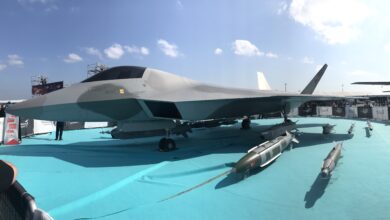Collins Tests F-35 Fighter Jet Cooling System Replacement
Raytheon subsidiary Collins Aerospace has tested an 80-kilowatt cooling system as part of an F-35 aircraft power and thermal capability replacement effort.
During the trial, the Enhanced Power and Cooling System (EPACS) was put through a series of operating conditions to support future operations.
The technology was developed under a US Government Accountability Office recommendation to integrate a new system for the aircraft, as the F-35’s existing generator was found to be “operating beyond design parameters” and “has already added substantial costs to the program’s lifecycle cost estimate.”
“The F-35 is a mainstay of allied forces around the world. In order to modernize the platform with advanced systems to counter emerging threats, a significantly enhanced cooling capability is required,” Collins Aerospace Power & Controls President Henry Brooks explained.
“Through its more efficient thermodynamic cycle, EPACS can deliver the increased cooling the F-35 needs and help extend the life of the aircraft for decades to come.”

‘Critical Milestone’
According to the Connecticut firm, significant changes in the F-35’s temperature demand are expected due to the increase of modern mission systems being added to the vehicle.
To address this requirement, the F-35 Joint Program Office decided to expand the jet’s cooling generator to 80 kilowatts, more than double the aircraft’s current capacity.
Collins’ EPACS is set to support this upgrade and future modernization programs throughout the F-35’s life service. The system will also be compatible with three variants of the platform, the company noted.
“Our service members urgently need an upgraded cooling and management system on the F-35 to keep pace with continuous modernization of the aircraft’s capabilities,” Connecticut Representative Joe Courtney stated.
“The EPACS 80 kW cooling capacity achievement demonstrates a critical milestone that will rapidly enable vital F-35 warfighting capabilities while resulting in substantial cost savings to the taxpayer.”












